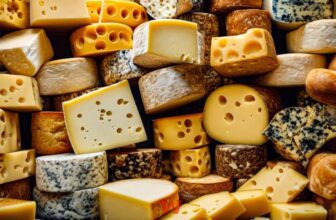The world’s most expensive teas come in a wide variety of flavors, each with unique characteristics and histories. The story of how tea became the world’s most consumed beverage is both fascinating and unexpected. It is believed that the discovery of tea consumption was purely accidental when, in 2737 B.C., a Chinese emperor had some ornamental leaves blow into the hot water he was drinking for its perceived health benefits. Taking a sip, he found the flavor surprisingly enjoyable, leading to tea becoming a royal drink of choice and eventually evolving into the global luxury commodity it is today.
Just like rare mushrooms, some teas are so exclusive that they sell for astronomical prices. Let’s explore the most expensive ones and what makes them worth the price!
Most Expensive Teas In The World
It would be a while before the popularity of tea consumption spread to other parts of the globe. The most common link of tea making its way to the Western world is when Portuguese explorers acquired it in China and brought it back to Europe in the 16th century. It would be another two centuries until tea went into mass production by the Dutch and the English.
The Simple But Unique Nature Of Tea
Some will be surprised to find out that all tea actually comes from the same camellia evergreen type, a plant native to Tibet, Northern India, and China. There are two primary varieties of this plant, with their differences being largely in where they grow (one in low, tropical elevations, the other in cool mountain highlands), as well as the size of the plant’s leaves.
Tea is mainly grown around South America, Asia, and Africa, as well as regions adjacent to the Caspian and Black Seas, but 75% of the tea produced in the world comes from a total of four countries: China, Sri Lanka, India, and Kenya.
As far as tea variations, there are just four primary types. These include black, white, green, and Oolong. Typically nothing is added to the tea leaves during tea production, but they are made from one of the two noted plants, but the leaves harvested for these teas are processed in their own distinct ways.
To oversimplify how a plant gets made into tea one just needs to understand that when the tea leaves are picked, they immediately begin wilting and experiencing the natural enzymatic oxidation process once exposed to oxygen without being attached to their earth. The leaves are then heated and dried, which slows the oxidation process significantly. That is just a very high-level description of the tea-making process, but in reality, the production of the world’s most renowned teas is a far more complex process of blending science and art.
Organic teas are all caffeinated, though the caffeine content is far lower than that in coffee. People often drink teas not just for their delectable taste, but also for stimulation, as well as its calming and soothing qualities.
The Basics Of Teas
As mentioned there are 4 primary tea types, but the varieties of those types extend almost without limits. Again, the predominant teas in the world include:
- White: Traditionally these are unoxidized, made from fully wilted leaves.
- Black: Fully wilted and oxidized, giving it a dark esthetic, along with deep flavor and aromatic scents.
- Green: Unwilted and unoxidized leaves are used.
- Oolong: This type of tea is a bit of a hybrid breed with leaves experiencing natural wilting, then partially dried, and “bruised” by being vigorously shaken to get the desired and distinctive appearance.
From these teas, there are many branches of other tea types, with thousands of different teas being available on the market. Many teas are enhanced through combinations with various spices, oils, herbs, and flowers. What about herbal, decaffeinated teas? Those commonly contain very little actual tea, rather they are derived from bark, flowers, and other fragrant plants.
One of the things the world loves most about tea is the versatility with which it can be consumed. It can be drunk when hot or iced, it can be paired with multiple spices, combined with fruits, addended with milk or juice, and sweetened by adding honey or sugar. It even has strong medicinal elements with high anti-inflammatory properties.
Finally, tea is made by placing a small bag that contains 2 to 3 grams of tea leaves or loose tea leaves in a cup, then pouring hot water over it.
Renowned Tea Variants
Many cultures have traditions that involve tea, making it one of the most popular drinks in the world. Each tea has a distinct flavor, a fact that naturally produces certain “super fans” of the beverage. These “tea snobs” usually are very particular about the type of tea they like and how they drink it, while most novice drinkers can easily find several teas that are friendly to their palette. Let’s take a look at some of the particular characteristics that distinguish different types of teas.
1. Black Tea
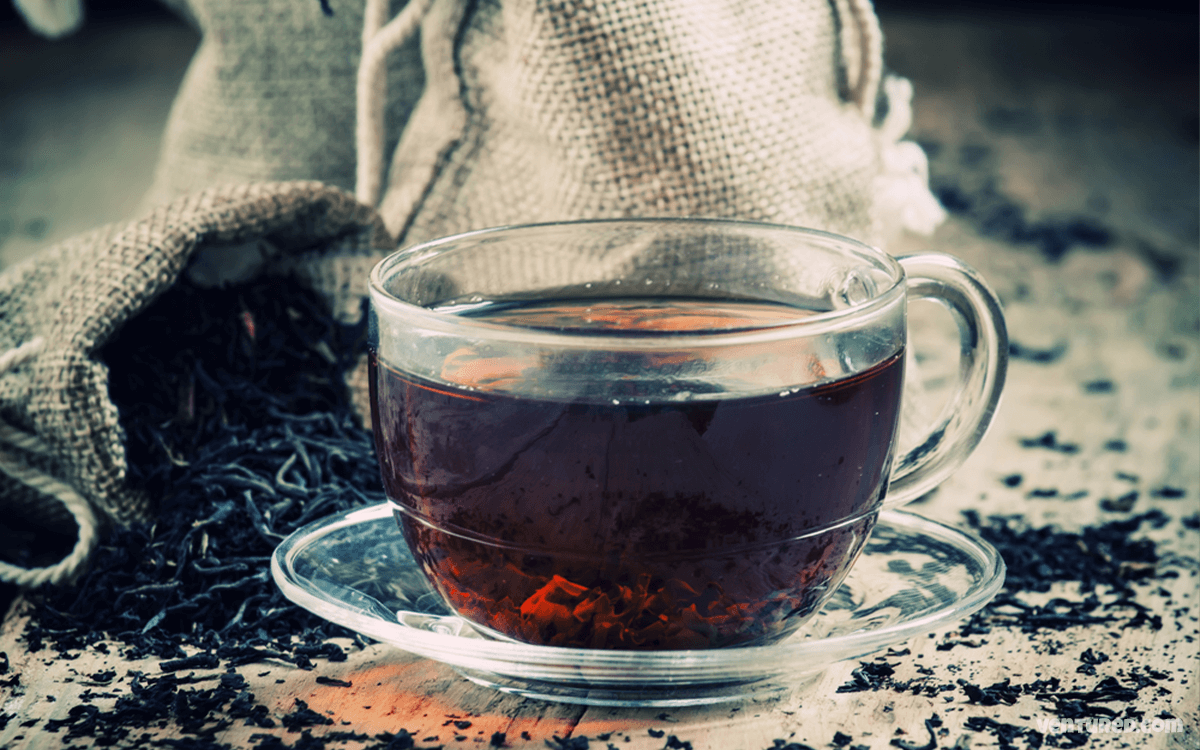
Black tea is best known for its flavorful nature and strong aromatic attributes. Those who drink iced tea almost always use black tea for that reason. Earl Grey is probably the most well-known black tea on the market, and it has an orangy taste and citrusy smell due to its bergamot oil flavoring.
Black teas don’t all taste the same nor do they all look black. Depending on what they are mixed with, black tease can range in color from dark brown to mahogany or a deep red. The tea’s flavors are strong, though not necessarily sweet, so many people use sugar and honey to sweeten their tea, or append milk or lemon.
Medical research points to black teas as having beneficial health properties, and being great for helping keep arteries clean of plaque buildup. On the flip side, the caffeine content of the tea causes some drinkers upset stomachs when consumed without food.
2. Masala Tea
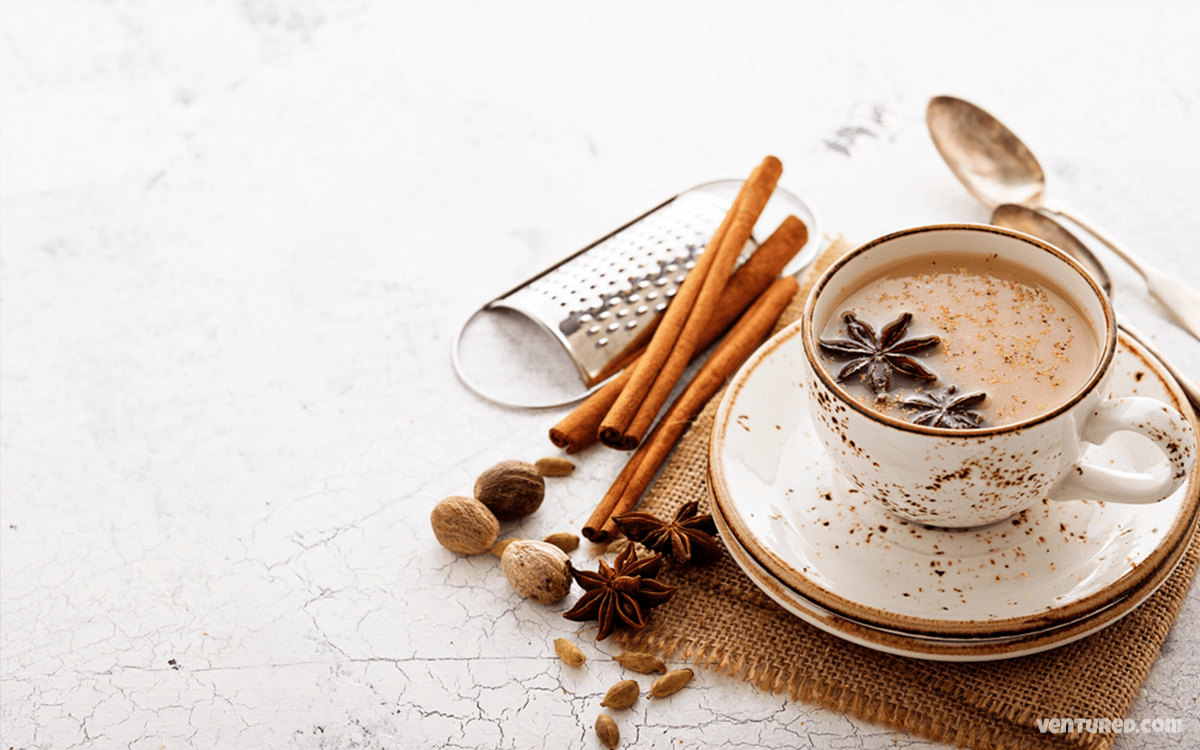
One of India’s favorite tea variants is the Masala Chai. It is made from black tea leaves but infused with cardamom, ginger, anise, cinnamon, and clove. Typically served with some sugar and a touch of milk, Masala tea is praised for its delightful taste as well as its aroma. There is also a Chinese variant of Masala tea, the fermented Pu’erh which is brewed from aged leaves. It is said to have a smooth, “mature” taste, with flavors varying. It is, however, notably drank by those who seek to help their digestive process work more optimally.
3. Green Tea
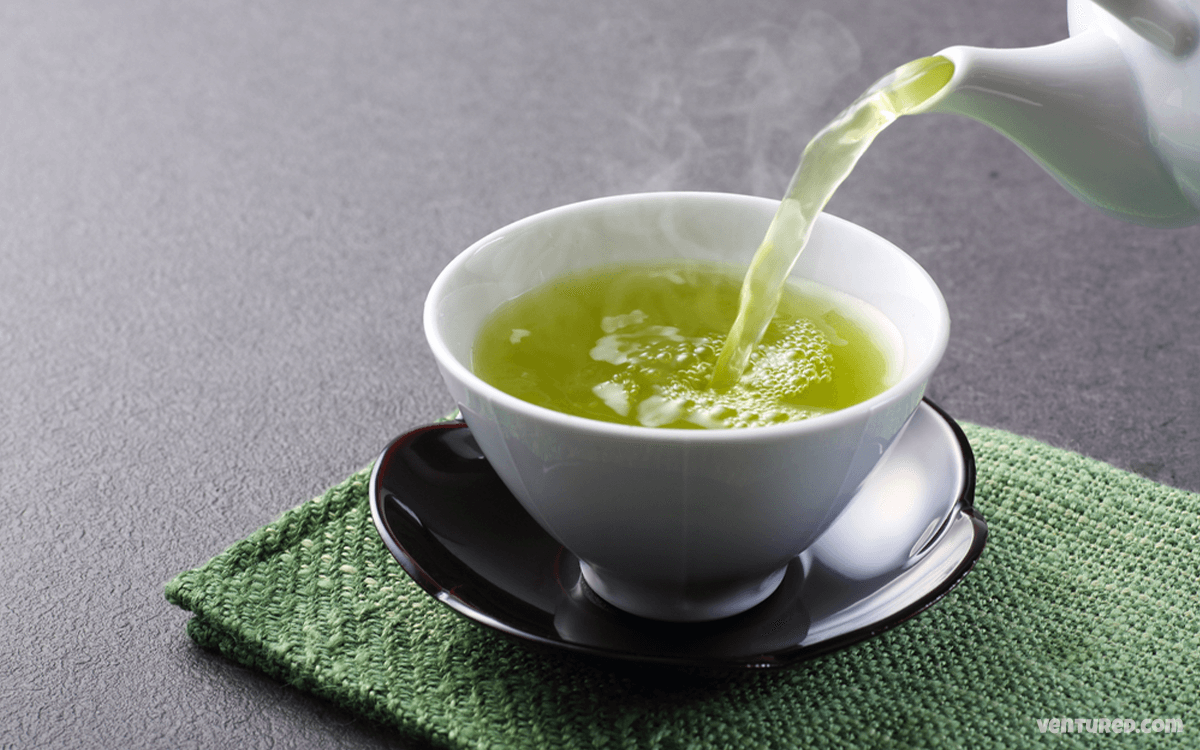
Most cuisine from the Orient sector of Asia is typically inclusive of green tea, one of its prime staples, with Jasmine tea being the most popular type. Nearly all tea grown in Japan is green tea. It is hardly oxidized with a greenish tinge, though in most light settings it more closely resembles yellow. Aside from being soothing and delightfully scented, it carries medicinal attributes like lowering cholesterol, boosting metabolism, and more beneficially helping the heart. It is freshly brewed and served hot, typically consumed without additives like sugar, lemon, or milk.
4. Sencha Tea
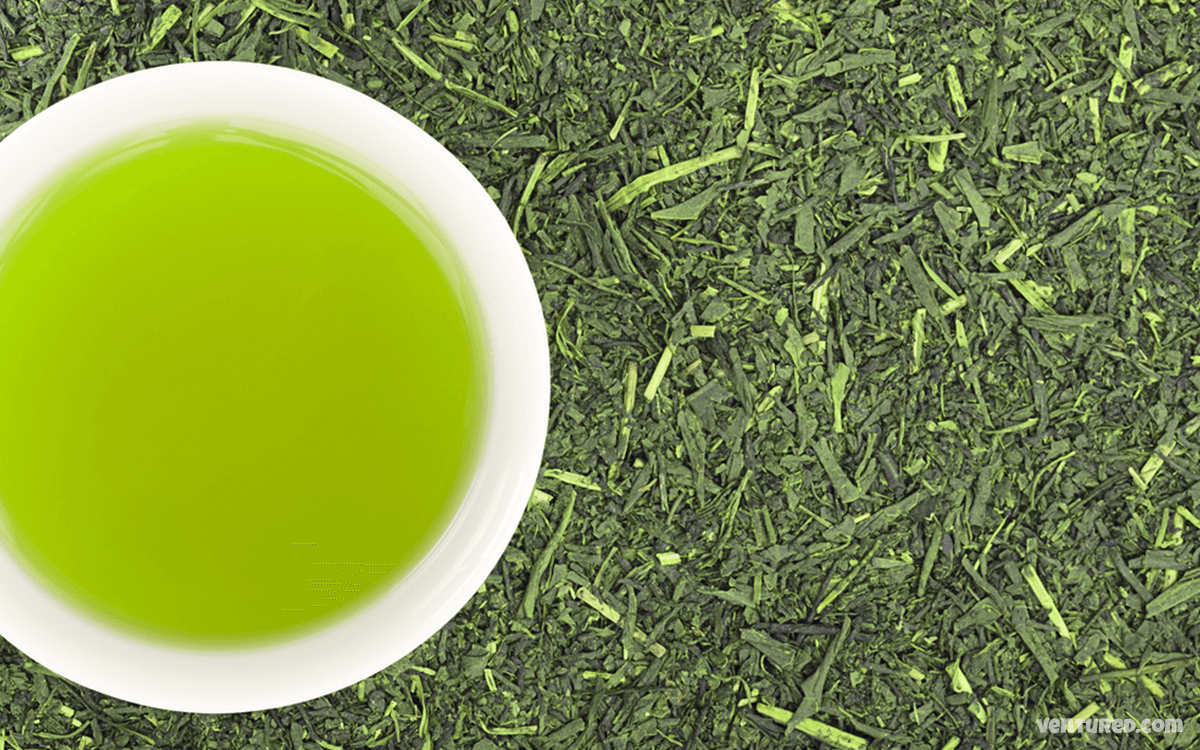
The most commonly found and consumed Japanese tea is Sencha. The tea leaves used to brew it are dried in natural sunlight, with certain types, such as Kabusecha and Gyokuro teas being covered by a screen (from reeds of cloth) for a portion of the tea plant growing season.
5. Tencha Tea
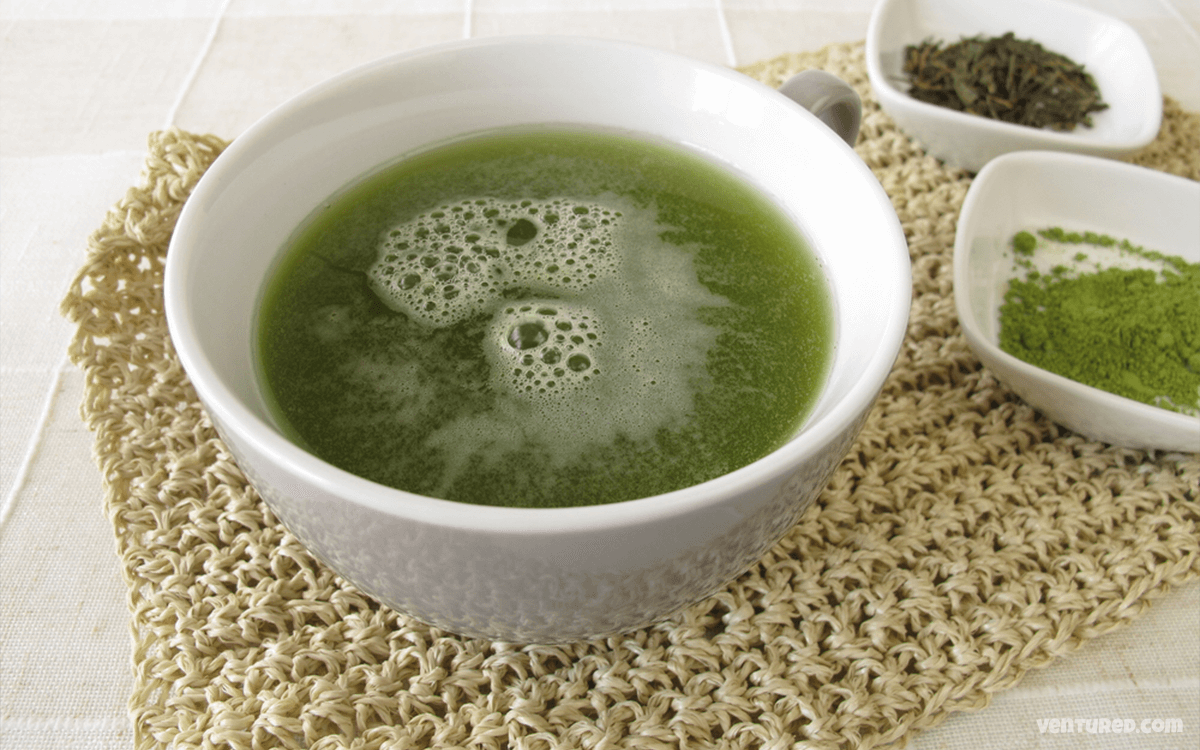
Tencha tea is brewed from leaves that are shielded from light entirely during the duration of their maturity. They are either grown in the shade or covered from direct sunlight’s interference. This is not just a popular product in Japan, it is a base ingredient in green tea ice cream, a popular Japanese delicacy. This tea is made from powder that is finely ground. It even has its own unique tea ceremony. These ceremonial teas are made from ground plants that were planted and have grown for over a century. As the tea is powdered, the entire leaf ends up being consumed by the drinker throughout the drinking process.
6. Oolong Tea
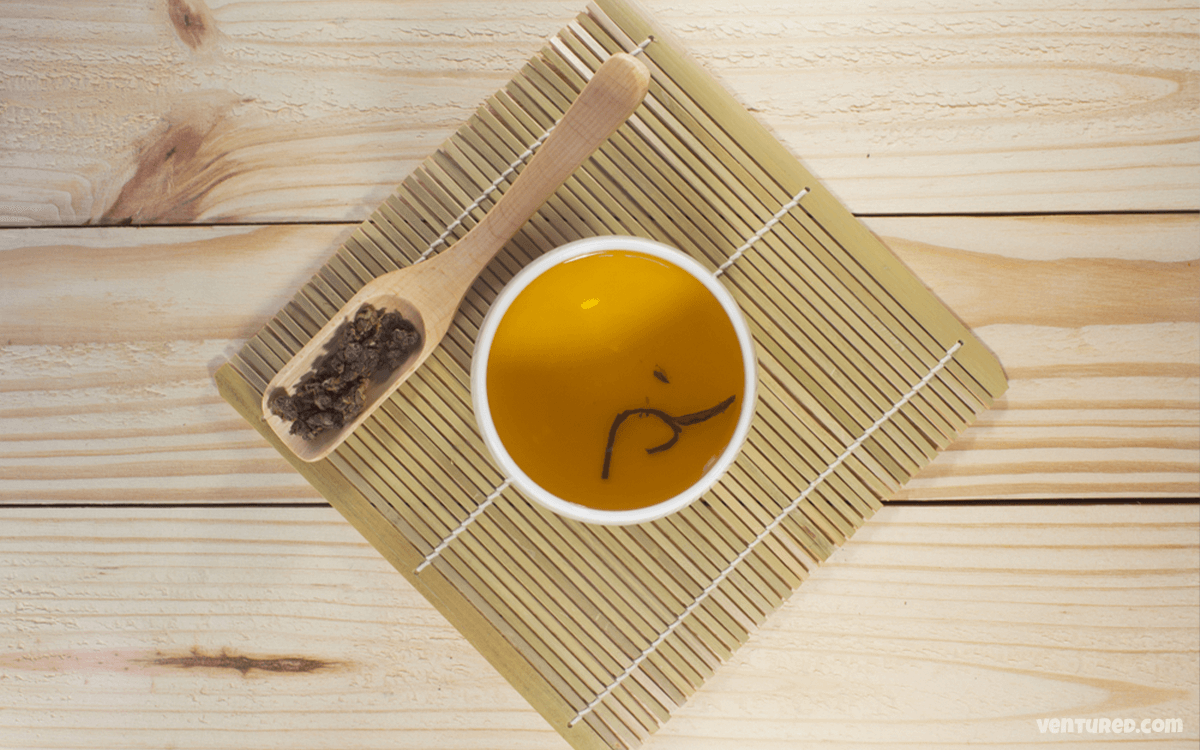
While the Oolong tea is derived from the same plants as green and black teas, it is rolled into a distinctive shape. The tea has a variety of colors, and colors that range from greenish to brownish. It is loaded with antioxidants and evidence has shown that it can counteract the onsetting of diabetes. As far as caffeine content, it has about as much as half of a coffee cup.
7. White Tea
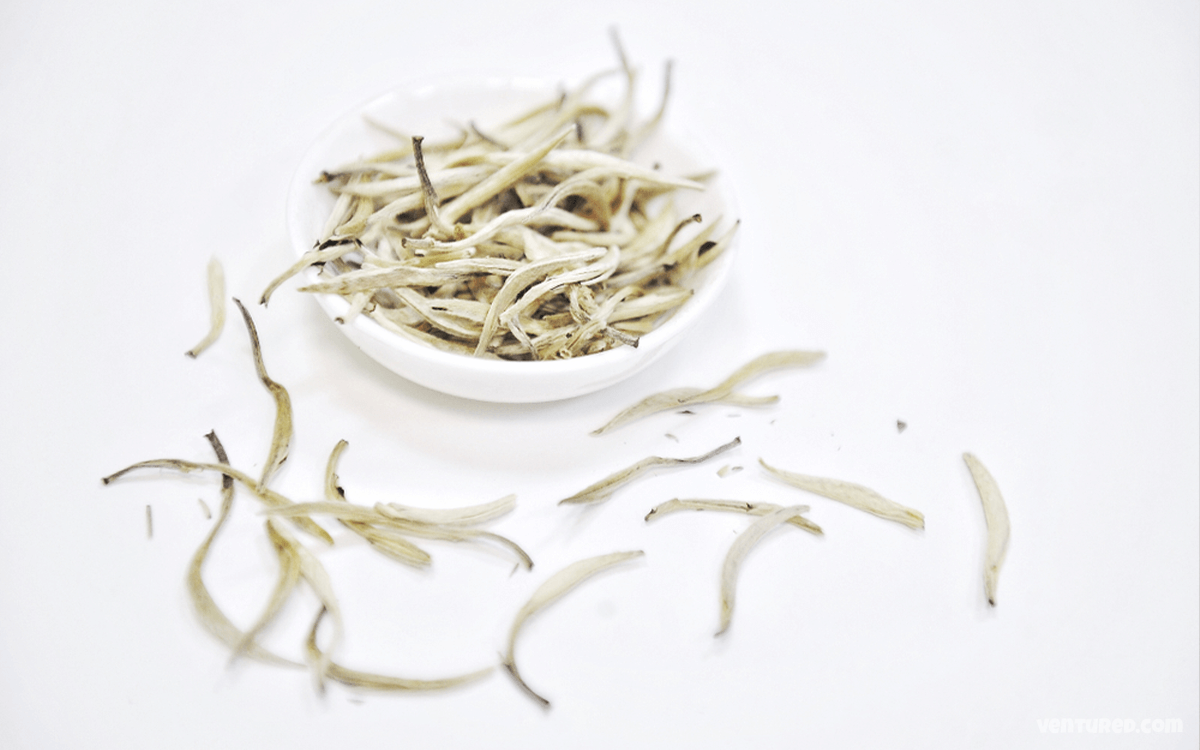
White tea, which is entirely unoxidized, has been described by drinkers as nutty and sweet, light, and mellow, while its coloring is less white and more of a dim yellow hue. White tea drinking has been linked to optimization of cardiovascular health, as well as with skin benefits, acting as an anti-aging agent. In fact, many lotions and skin creams include white tea as one of their ingredients. Some popular white teas include Jasmin, white peony, and orange spice.
The World’s Most Expensive Teas
Teas are not typically viewed as a luxury item since the great majority are readily available and priced reasonably. But there are some more exotic teas with a genuinely high price point. Some of them are very rare types of tea, while some have gold-coated leaves while others are simply packaged in a very unique way.
The following list includes teas that stray from the ordinary teas common worldwide. If you have money to spare and are that enthusiastic about tea, you could try to get your hands on these pricey rarities. Now, let’s talk about the world’s 11 most expensive teas.
1. Da-Hong Pao Tea
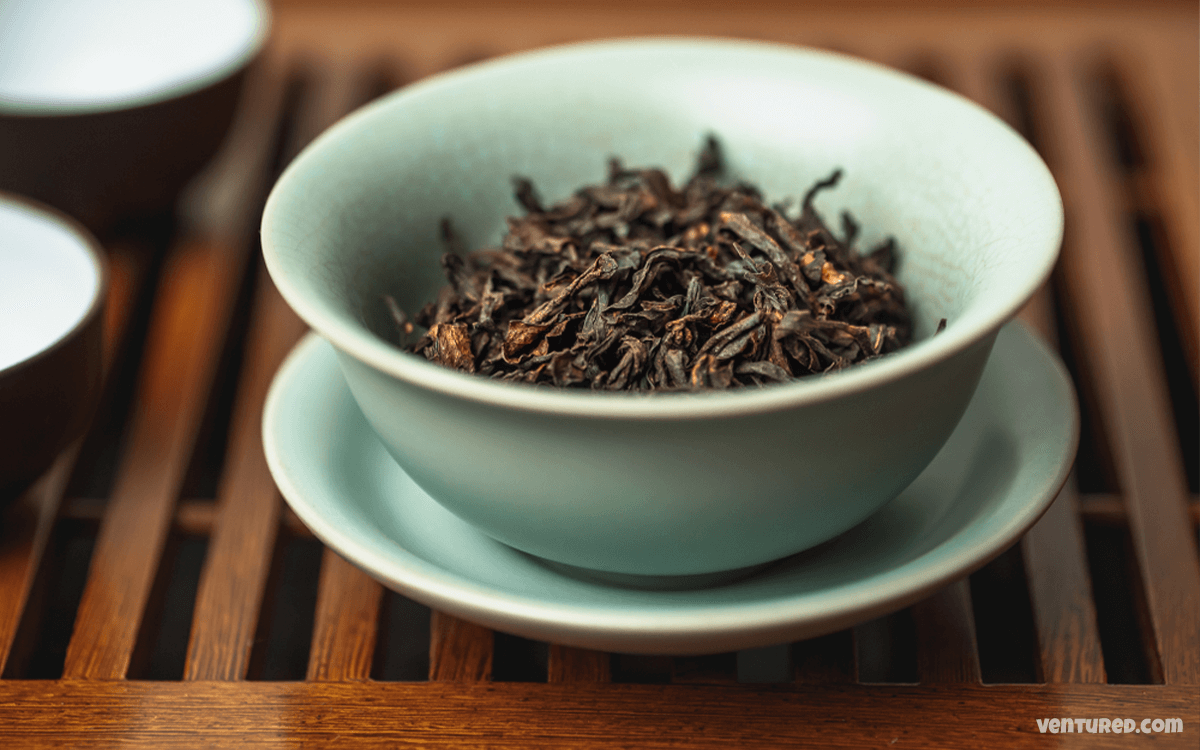
Da-Hong Pao tea holds the world record for collecting the highest price paid for a small amount of tea. That’s because, in 2002, a buyer purchased a mere 20 grams of it for $28,000 (a rough equivalent of $1.4 million for a kg). Why is it so pricey? To start, Da-Hong Pao tea is very rare. It is a traditional Chinese beverage served mostly to visiting dignitaries from other countries as a gift of the state.
The leaves used in brewing Da-Hong Pao are cut from ancient “mother trees,” some of which age over three and a half centuries. Some cuttings are made into a tea that is not quite as exquisite, though still considered Da-Hong Pao tea, allowing it to be sold for prices that are a bit more reasonable. The last time the trees were harvested was in 2005, with the harvesting process stemming back to the Ming Dynasty and having been largely kept a secret all this time. Some of these trees won’t ever be picked for harvest again in our lifetimes.
Because Da-Hong Pao commands such a high price, the supply of it around the world is often still with merchants, as too little of the existing harvest is sold. The tea is regarded as having healing properties and grows only in a specific region of southeastern China in the Wuji Mountains. Today, this tea is most commonly distributed by Harvey & Sons, with one-pound bags sold for $350.
2. P.G. Tips Anniversary Tea Bag
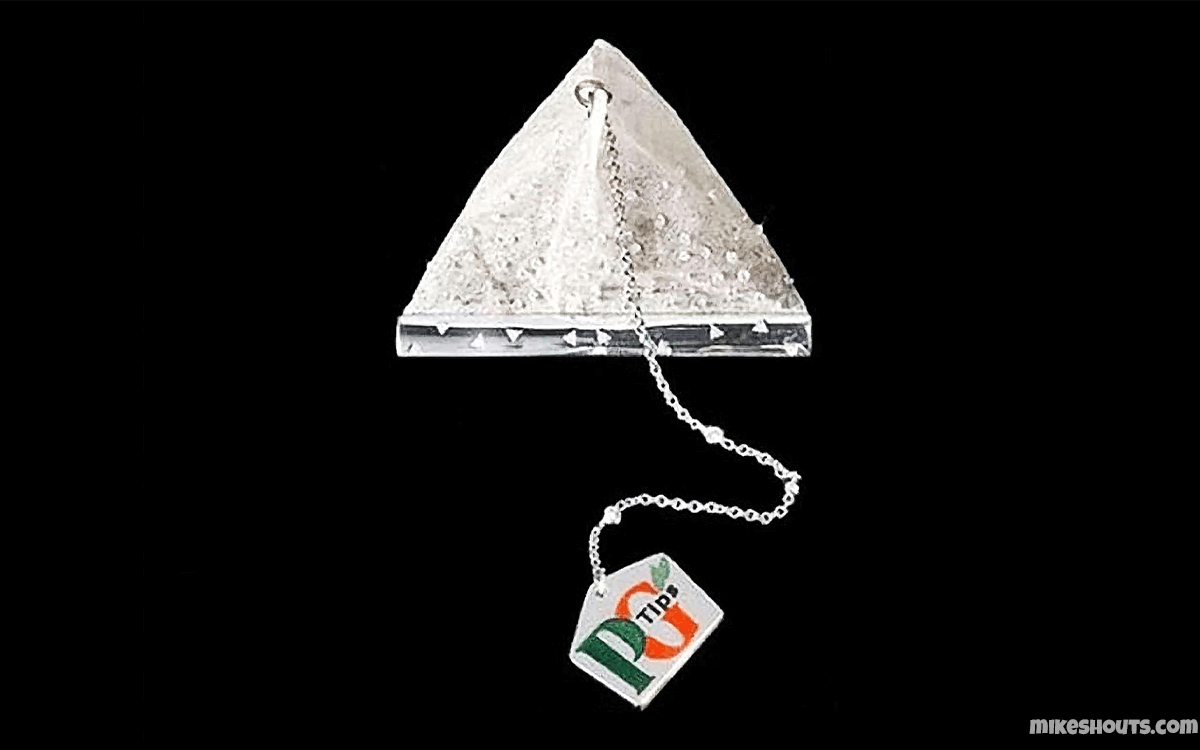
P.G. Tea stood for “Pre-Geste,” a name a bit uninspired when first marketed as it translates to “Digestive Tea.” The brand, which launched in the 1930s, was shortened to its acronym for better marketing. When the 75th anniversary of the brand’s existence came about the brand, now named “P.G. Tips” released an anniversary bag to commemorate the event which was not only diamond-studded but included Silver Tips Imperial Tea. Humans surely love wrapping delicacies in precious metal, something proven already with examples such as Swarovski studded chocolates.
The commemorative bags sold for $15,000 apiece. The original idea behind this massive sum was to give the money to a children’s charity in Britain, but we do have to wonder about whether this brand was ever even brewed.
3. Yellow Gold Tea Buds
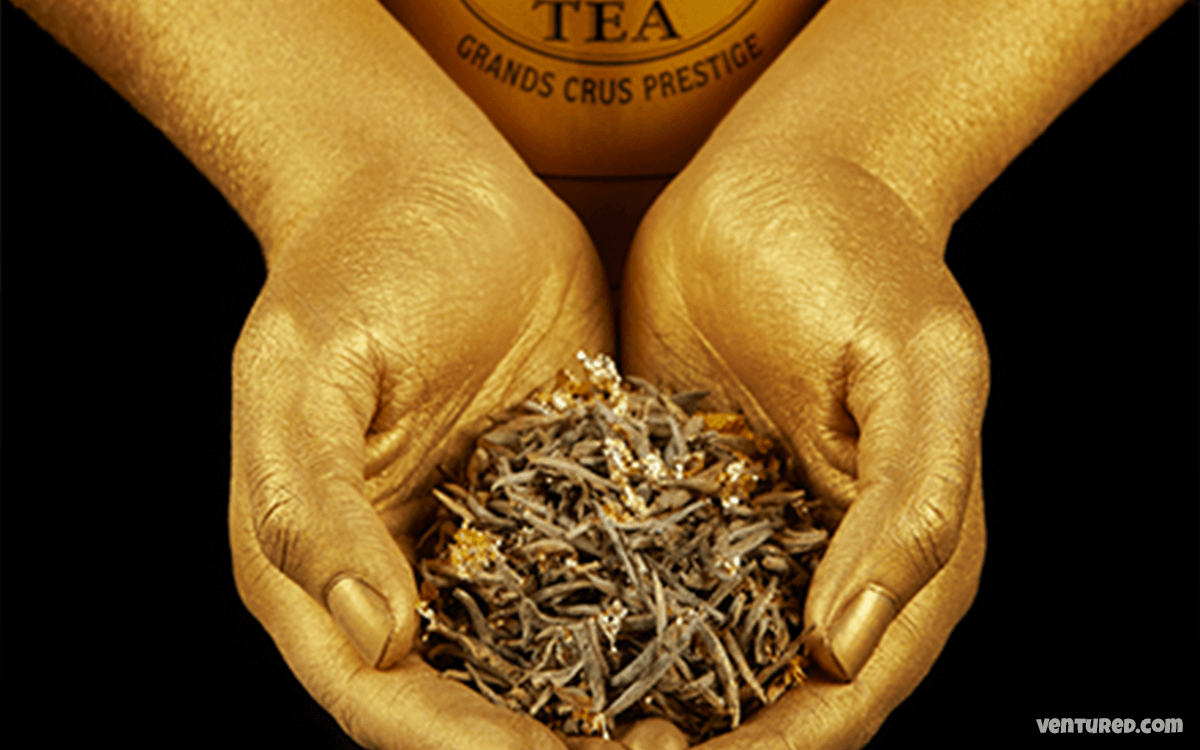
The Yellow Gold Tea does not get its name because of the natural hue of its leaves, but rather because they are painted with 24-karat gold after harvesting. Those who have to pause at the idea of digesting metal paint can rest easy as this gold coating has been deemed safe for consumption, and is even regarded as being healthy. For $7,500 per kg of tea, this beverage is asking quite a bit in terms of price, but for tea aficionados, this tea, sold exclusively in Singapore, is highly prized.
Only TWG Tea offers this type of tea, making it the world’s rarest tea. History points to Chinese emperors being served this tea, with the leaves grown on plants only from a specific Chinese region. These leaves are harvested off the trees only once annually, on a specific day, and are cut from the branches with golden scissors.
Those who consume Yellow Gold Tea tea, typically eat the leaves afterward. The tea can be ordered in loose-leaf form too and or in a 50-gram box for $529. While not $7,500, that is still quite a sum.
4. Vintage Narcissus Tea
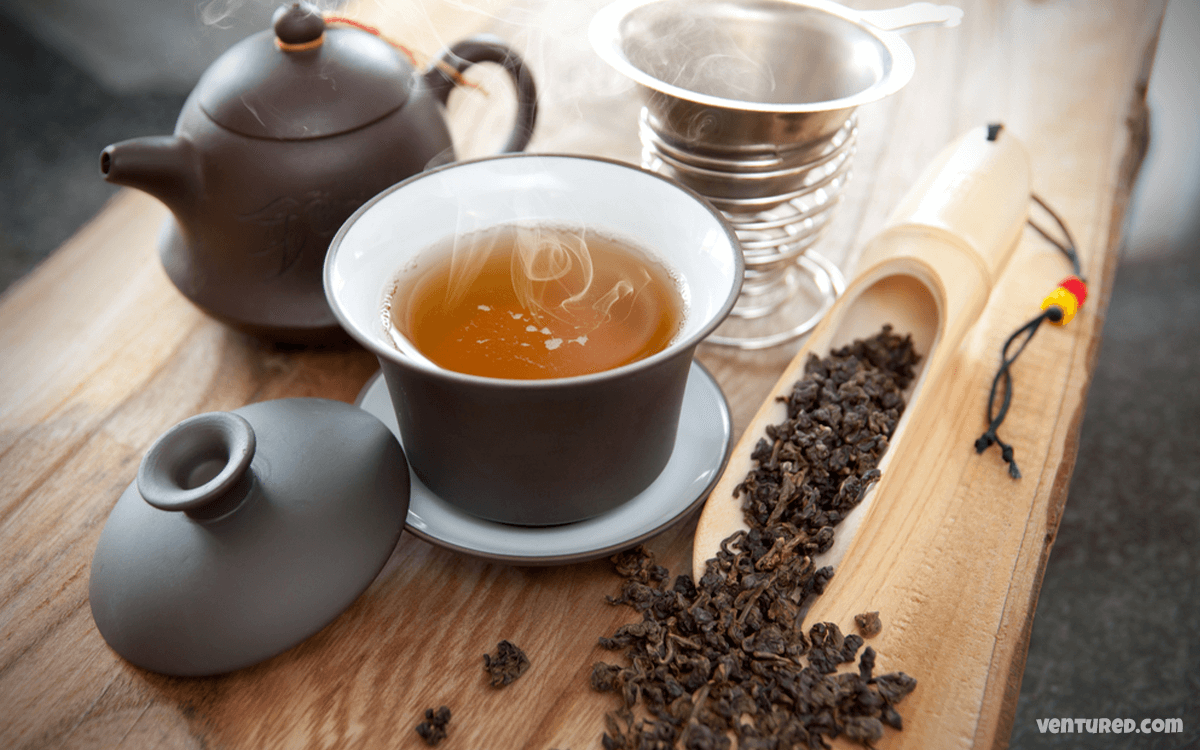
A 20 kg box of Oolong exported from China to Singapore once collected one of the five highest bounties in 1960. After being sold and resold, a Malaysian-Chinese collector finally purchased it. Grown in China’s Wuji mountains, the Vintage Narcissus Tea has flavors that overlap between woody, flowery, and chocolaty. The terroir of Wuji tea is comparable to fine wines.
What makes these teas more difficult to harvest is that some of the plants cling to boulders and rocks on a craggy landscape, so they cannot be collected and used for tea, parametarizing harvests. When grown in lower elevations, these tea leaves are easier to collect and yield more tea, and as such, they do cost less. A typical cost for a kilogram of this tea, however, is still $6,500.
5. Panda Dung Tea
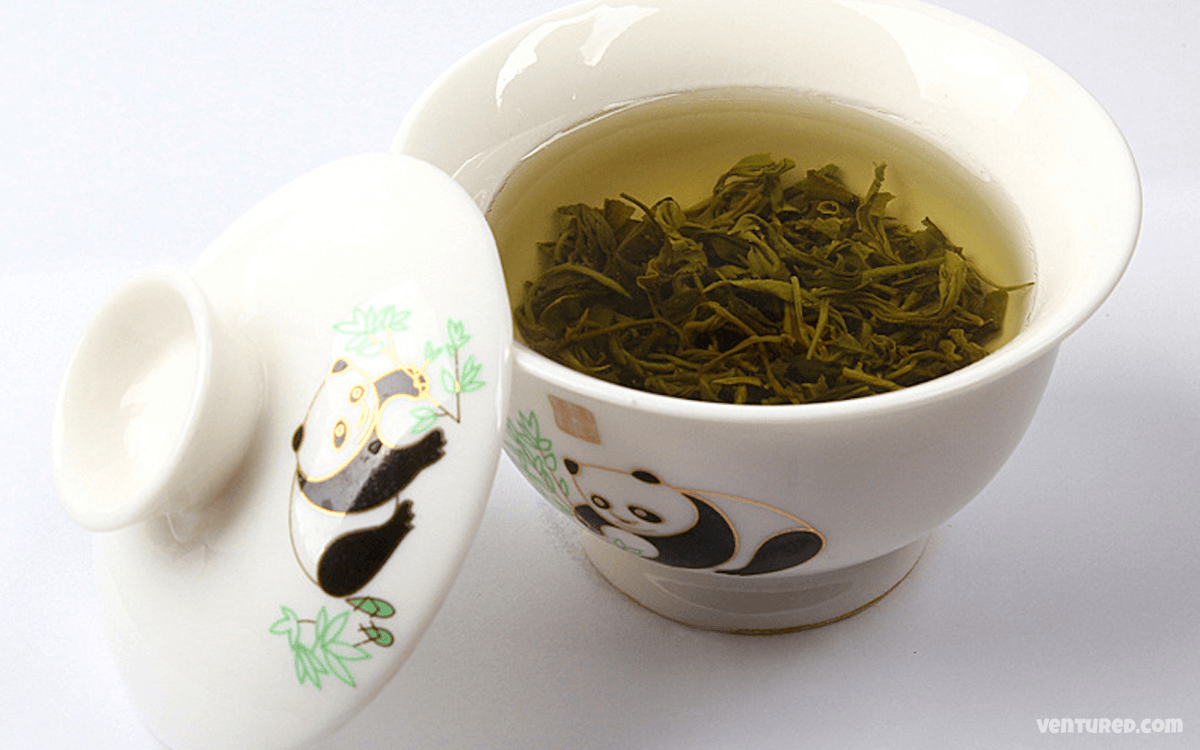
If you’re wondering how on the nose this tea’s name is, it is pretty close. The Panda Dung tea does come from tea leaves fertilized in panda droppings. How does someone market a tea like this? Well, since its initial 2012 production, sellers claimed that since pandas consume only bamboo and only process about 30% of its nutrients, the rest is infused in their waste which transfers those health properties to the tea grown in them.
In fact, while the name of the tea could have been a bit more turn-offish, the tea’s proponents do point to the health-boosting properties of green tea and bamboo combined, including the fact that both contain cancer-combating ingredients.
Since the tea was introduced its prices for it have fluctuated. The harvesters of the Panda Dung tea have distributed it widely, however, through various online retailers and specialty tea shops. Actually, there is a good chance that your local Target carries it. So why are the prices so high ($3,500 for 50 grams or $70,000 for a kg)? Well, the panda population is on a steep decline, making the harvesting of this tea a lot harder every year.
6. Tieguanyin Tea
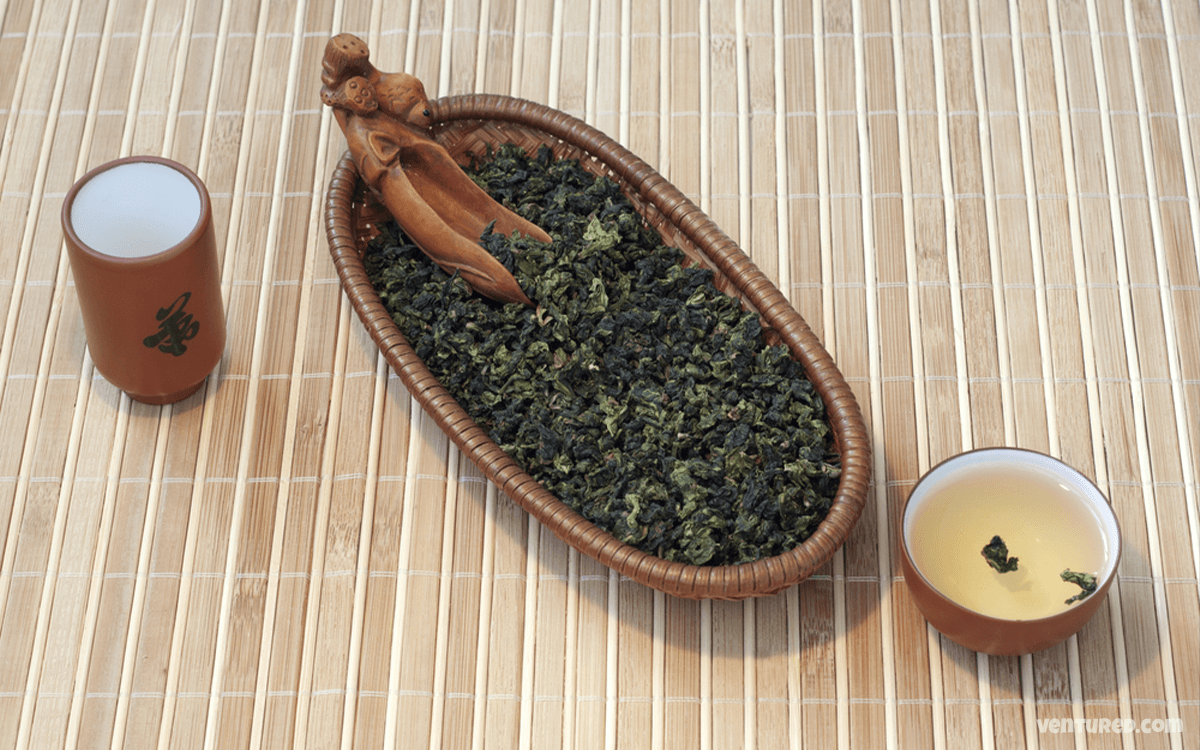
The Tieguanyin Tea, another Chinese Oolong variant, is quite a unique substance. Aside from being potent enough to keep its flavor through as many as 7 infusions, its leaves actually make a type of ringing sound when poured into cloth bags.
The tea’s namesake is attributed to the Buddhist Iron Goddess of Mercy and is a blend of green and black teas, that presents a distinctly chestnut-like flavor. The trees that grow the Tieguanyin tea leaves reside in Fujian Province of China, high in the mountainous regions of the area. Once they are harvested, they are oxidized and dried much in the same way other teas are, then rolled, scented, and roasted to result in the final tea product.
The price of $3,000 per kilogram is certainly steep, but tea lovers argue that the flavor and the strength to reinfuse multiple times make the teabags that hold the leaves quite worthwhile. So let’s do the math for a moment. If the kilo is $3,000, then every gram is $3, and one cup requires about 3 grams ($9 per cup). But if that can be infused up to 7 times, that turns this expensive price into quite a bargain in the end.
7. Silver Tips Imperial
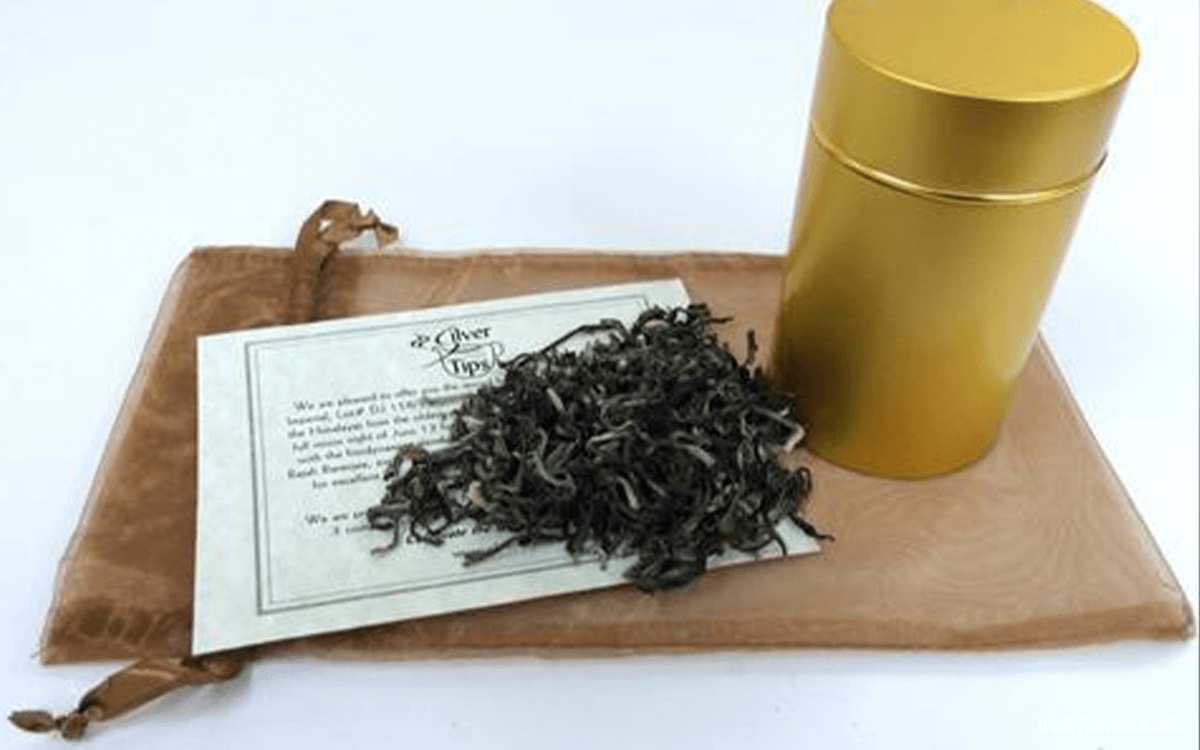
The next tea on the list is harvested in West Bengal, India at the world’s first tea plantation, the Makaibari Tea Estate. The Silver Tips Imperial tea is a type of Darjeeling, the tea plantations’ well-known brand, which is currently marketing by Luxmi Tea. It is a semi-fermented Oolong tea that is known for its anti-aging and relaxing agents. The tea is made in limited quantities every year. One aspect is the finite number of trees that produce the tealeaves, another is the fact that they are harvested only during full moon nights and days of the harvesting season.
The company has other tea varieties, but the multi-award-winning Silver Tips are dubbed the “jewel of the crown.” It is enjoyed during the evenings by avid tea drinkers, who clearly have some money to invest in the product. The tea can be ordered from the producers for $30 for just 50 grams, but the record sale was made in 2014 when the Tea Estate shipped the tea to the United States, the UK, and Japan for $1,850 per kg.
8. Poo Poo Pu-Erh Tea
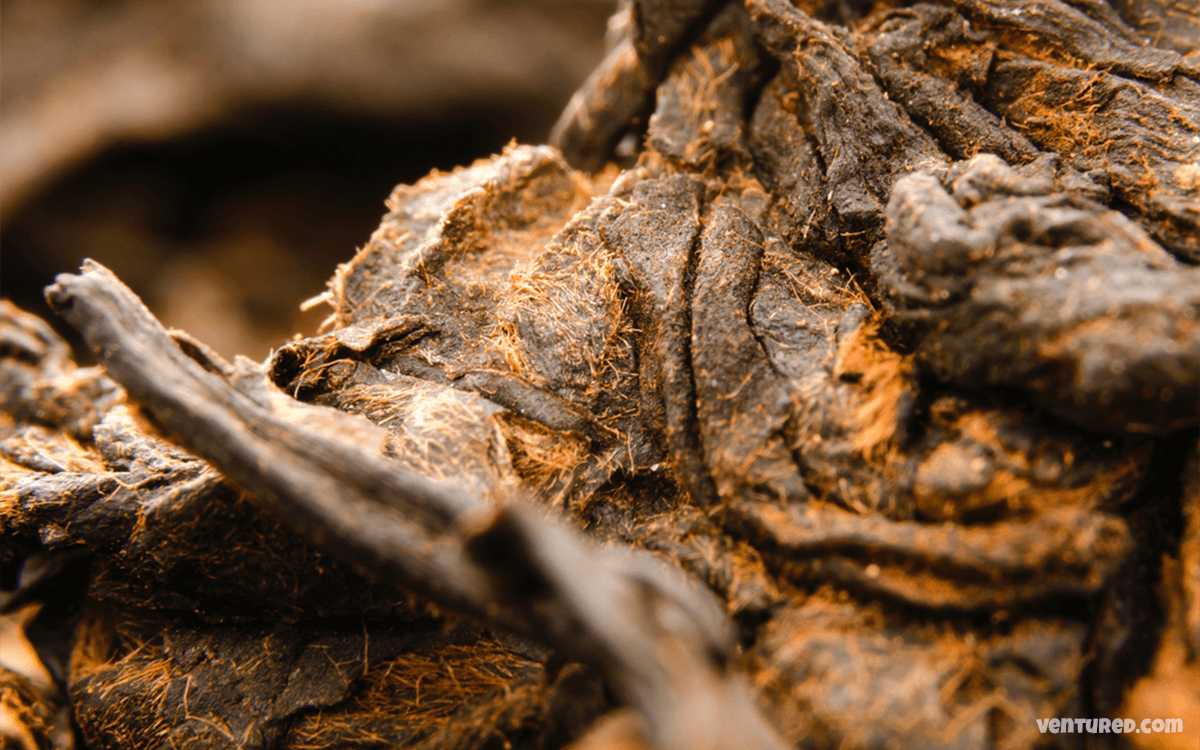
The Chinese province of Yunnan produced this curious type of tea. While it isn’t the only one to have a type of unusual waste-based ingredient, it is one of the few that incorporate insect feces. To add to the on-the-nose name and the odd nature of this tea’s cultivation, a kilogram of the Poo Poo Pu-Erh tea leaves sells for $1,000. The tea is also said to have healing qualities.
While the idea of consuming insect excrements doesn’t excite many, those who have taken the chance on the curious concoction describe the experience as rather pleasant, and the tea being thick, smooth, and strong.”
9. Goreanna Broken Leaf Black Tea
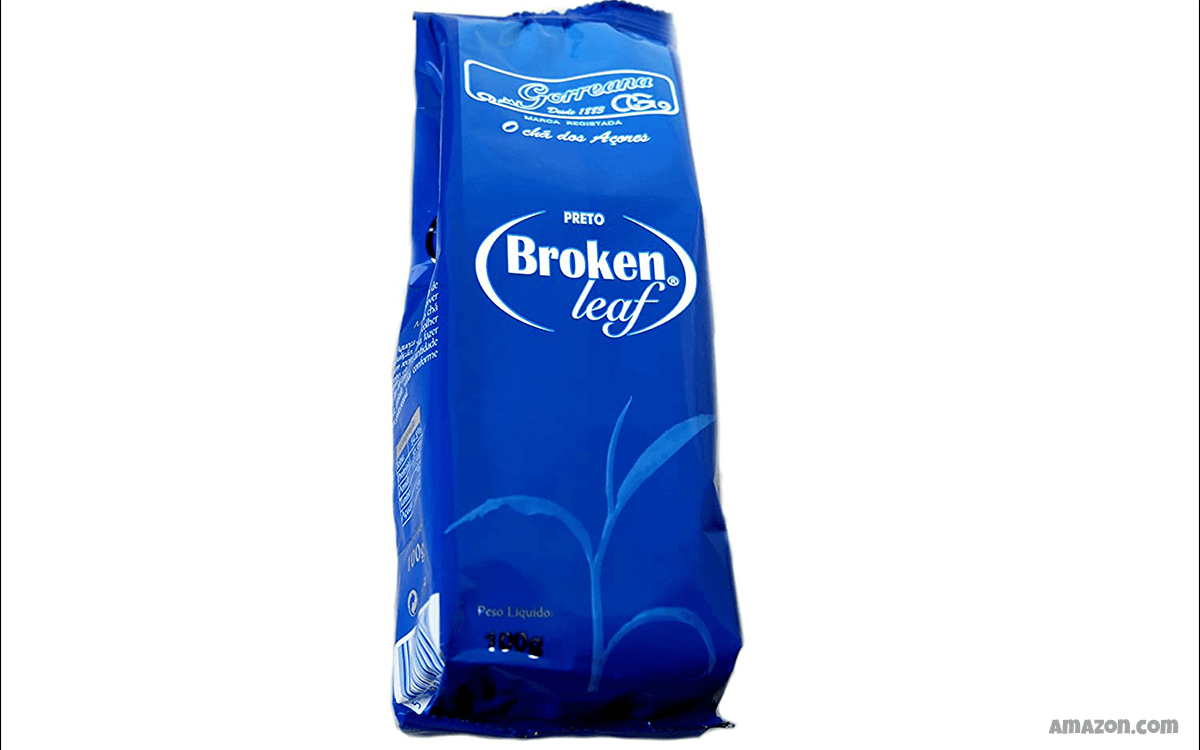
The Portuguese Cha Gorerena from the Island of Sau Miguel, brings the world the Goreanna Broken Leaf copper-colored tea, uniquely using only every third leaf from each branch to produce the tea. This also happens to be Europe’s only surviving tea plantation, founded and operating since 1883, and it occupies a portion of the coast where the tea leaves are grown on plants enriched by the island’s volcanic soil.
The processing of the tea leaves is largely traditional, and the plantation is even open to visitors for unguided tours. It permits guests to walk the fields as well as to sample and purchase the final product. This is an enriching experience not just because guests can watch tea processed manually by the plantation’s workers, but also in that it enables interested guests to learn the history of tea development in Europe and that of tea in general.
10. Teinch Flower Tea
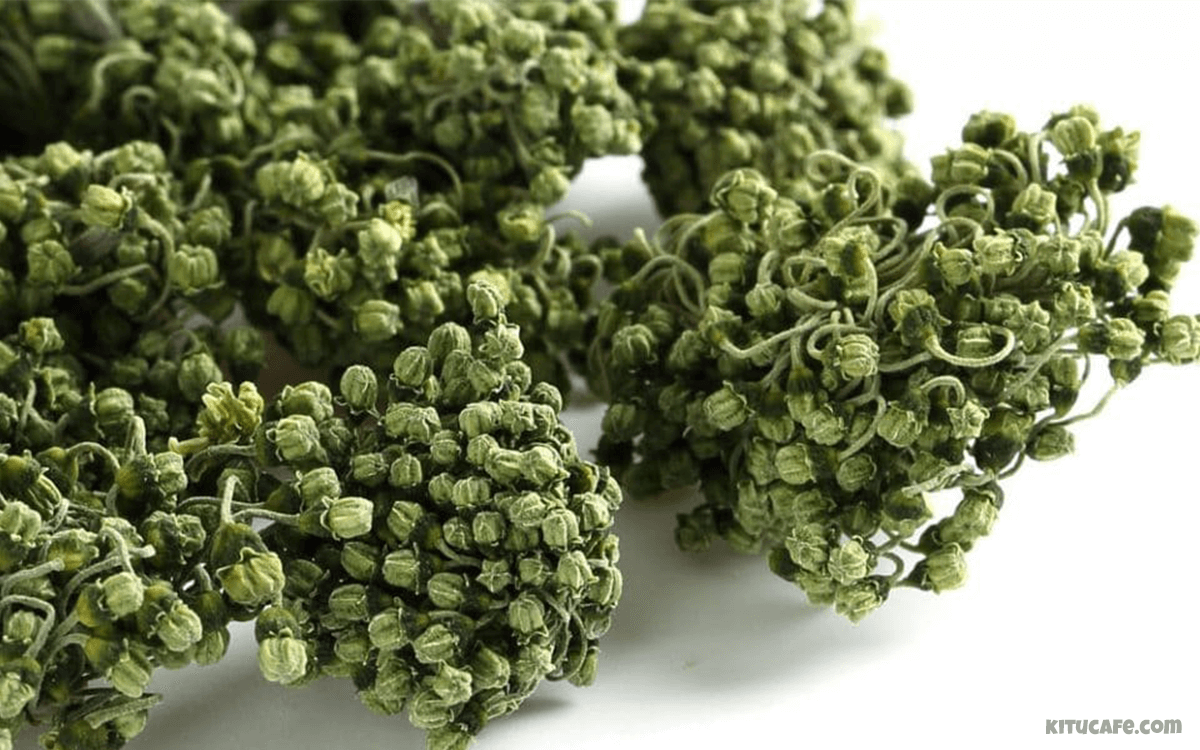
This tea, rife with detoxifying attributes, is capable of quelling certain allergies and reducing insomnia. Aside from its healthy qualities, the Chinese Teinch Flower tea is known for its unique appearance and its rich flavor. The clumps of tea more closely resemble broccoli flowerets. Its flavor carries something that is distinguished as a cooling quality with a sweeter aftertaste.
The tea’s benefits don’t stop at insomnia and allergies either. Traditional Chinese medicine has used its ingredients in combating everything from mouth sores to boils, mitigating dizziness and anxiety, as well as rehydrating the body by bolstering fluid levels.
11. Gyokuro
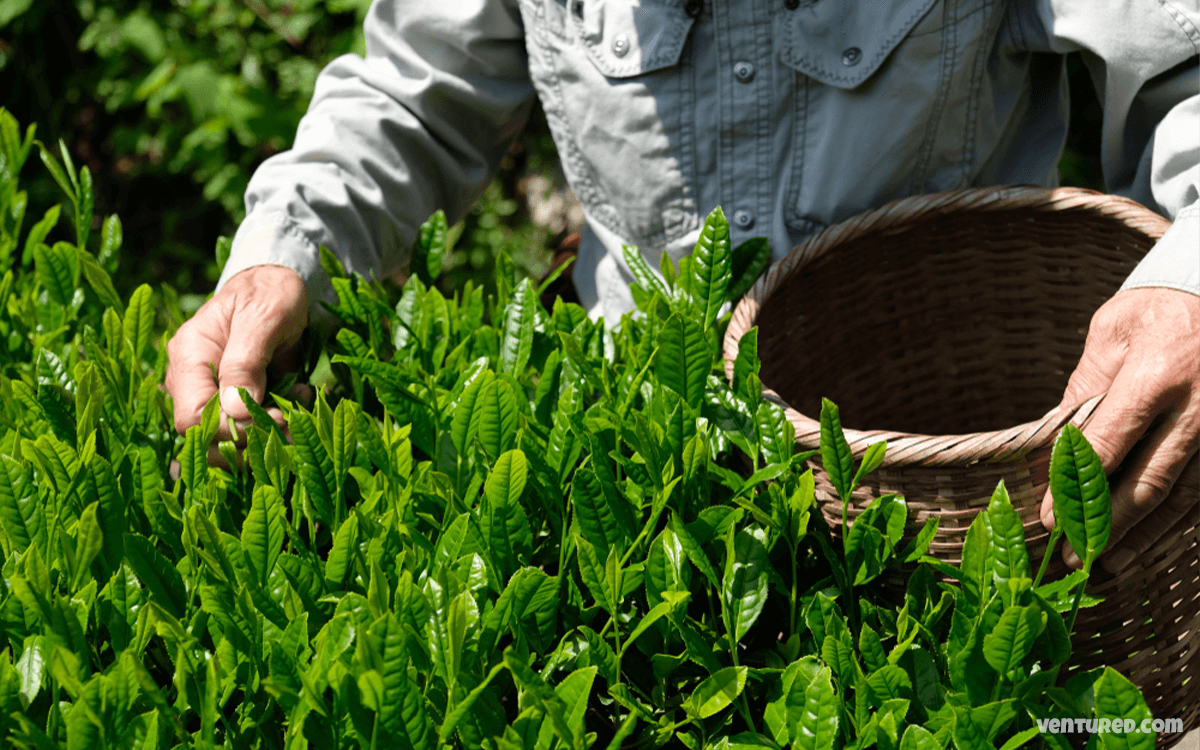
This tea comes from Japan’s Uji district and is a type of Sencha green tea that comes from plants that are typically shaded for 3 to 7 weeks before being harvested for their tea leaves. The shade helps to boost the leaves’ amino acid content, which generates a distinctive scent as well as a sweet taste. Sometimes known as Jade Dew Tea, the Gyokuro is one of Japan’s most expensive green teas at $65 per kg. It is admired by fans for its complex flavor array. It is highly caffeinated and rich in L-theanine (amino acid), vitamins, and minerals.
Conclusion:
In conclusion, tea is not just a popular beverage; it can also be a luxury item with a hefty price tag. The top 11 most expensive teas in the world showcase the rarest and most exotic varieties of tea, each with a unique taste and aroma. From the handpicked leaves of ancient tea trees to the labor-intensive processing techniques, these teas require much effort. While they may not be accessible to everyone, the high price of these teas reflects their exceptional quality and the dedication of those who produce them.
Frequently Asked Questions:
Does white tea have caffeine?
Yes, white tea contains caffeine, although in lower amounts than other tea types. The caffeine content in white tea can vary depending on factors such as the type of white tea and how it’s prepared.
Is twisted tea gluten free?
No, Twisted Tea is not gluten-free as it contains barley malt, a gluten source. People with celiac disease or gluten intolerance should avoid drinking Twisted Tea or other gluten-related beverages. It’s important to check the ingredient list and labels for gluten-free certifications when choosing alcoholic beverages.






